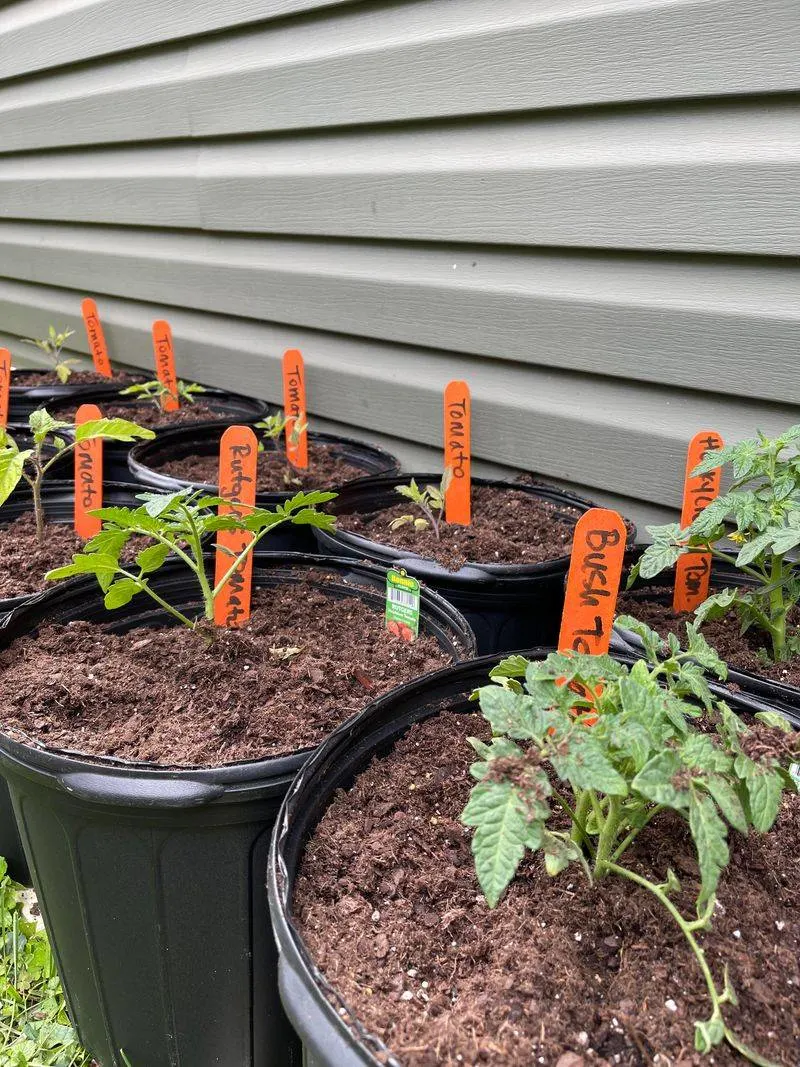Winter doesn’t mean the end of fresh garden produce. With container gardening, you can cultivate a variety of winter vegetables right on your balcony or patio.
This method is not only space-efficient but also provides you control over soil quality and plant health. Let’s explore how you can successfully grow a thriving container garden during the cold months.
Choosing the Right Containers

Selecting the appropriate containers is crucial for a successful winter container garden. Opt for materials that can withstand cold temperatures, such as ceramic, wood, or even sturdy recycled options.
Ensure they have adequate drainage holes to prevent waterlogging, which can harm plant roots.
The size of the container should align with the plant’s mature size, providing ample room for root growth. Larger containers are ideal for root vegetables, while smaller ones suit greens.
Adding a layer of mulch on top can help retain warmth and moisture, essential for plant health in winter.
Selecting Winter Vegetables

Choosing the right vegetables ensures a thriving winter garden. Hardy greens like kale and spinach are excellent choices due to their frost tolerance.
Root vegetables such as carrots and radishes can also flourish in cooler climates.
Brussels sprouts and cabbage are robust options that benefit from a light frost, enhancing their flavors. Ensure the selection suits your taste and cooking needs.
Incorporate a mix of leafy greens and root veggies to maximize diversity. Planning for succession planting can ensure a continuous harvest throughout the winter months.
Soil and Nutrient Management

The foundation of any successful container garden is quality soil. Use a well-draining potting mix enriched with organic matter to provide essential nutrients.
Mixing in compost can enhance soil fertility, promoting vigorous growth even in colder conditions.
Supplementing with organic fertilizers can boost nutrient availability, crucial for vegetable development. Regularly check soil moisture levels; it should be damp but not waterlogged.
Maintaining consistent moisture and nutrient levels is key to supporting plants during the less forgiving winter season.
Managing Light and Temperature

Light and temperature are critical factors for winter gardening. Position containers where they receive maximum sunlight, such as a south-facing window or a bright spot on the patio.
On particularly cloudy days, consider using LED grow lights to supplement natural light.
Temperature control is also vital. In extreme cold, move containers indoors or use protective covers to shield plants.
Maintain a balance, avoiding abrupt temperature shifts that can stress plants. Creating a stable environment will help ensure your winter veggies thrive in less-than-ideal conditions.
Watering Techniques in Winter

Watering needs adjust in winter, requiring careful attention. The key is to water less frequently but thoroughly, allowing the soil to dry slightly between waterings.
Overwatering can lead to root rot, especially in cooler temperatures.
Use tepid water to avoid shocking the roots, and water during the warmer part of the day to allow absorption before temperatures drop at night. Regularly check the soil’s moisture level using your finger or a moisture meter to prevent over or under-watering, ensuring plants remain hydrated and healthy.
Protecting Plants from Frost

Frost protection is essential for winter container gardening. Use frost cloths or horticultural fleece to cover plants during unexpected cold snaps.
These materials provide a barrier, trapping heat and preventing frost damage.
For added protection, group pots together against a wall or sheltered area, creating a microclimate with increased warmth. Consider elevating containers off the ground to reduce exposure to cold surfaces.
Consistently monitor weather forecasts to prepare for temperature drops, ensuring your plants remain shielded from harsh frosty conditions.
Pest and Disease Management

Despite the cold, pests and diseases can still affect container gardens. Regularly inspect plants for signs of infestation or disease, such as discolored leaves or unusual spots.
Use organic pest control solutions to address issues promptly.
Maintaining cleanliness by removing dead leaves and debris can prevent disease spread. Ensure good air circulation around plants to reduce the risk of fungal diseases.
An integrated pest management approach, combining monitoring with preventive measures, will help keep your winter garden healthy and productive.
Harvesting and Maintenance

Proper harvesting extends the productivity of your container garden. Gently pick outer leaves of greens, allowing inner leaves to continue growing.
For root vegetables, carefully lift them from the soil to avoid disturbing surrounding plants.
Regular pruning encourages new growth and prevents overcrowding. Maintain cleanliness by trimming dead or diseased foliage promptly.
Regularly refresh soil with organic matter to sustain nutrient levels. These practices ensure a steady supply of fresh produce, maximizing the rewards of your winter container gardening efforts.

